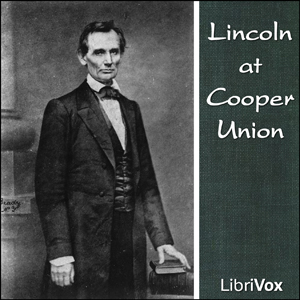- The pastimes of an Assyrian King, Painting, Frontispiece
- India Part I: The coming of the Aryans: historical note
- Hymn to Indra and Soma, from the Rig-Veda
- The people whom the Aryans found in India, by Sir William Wilson Hunter
- Savitri's choice, from the Mahabharata, rewritten by Elizabeth A. Reed
- India Part II: Buddha and his teachings: historical note
- The life of Buddha, by Sir William Wilson Hunter
- Stories of Buddha, by Sir Edwin Arnold
- Karma: a story of Buddhist ethics, by Paul Carus
- India Part III: A group of folklore stories: historical note
- Right and might, by Katherine Neville Fleeson
- The man in the Moon, by Katherine Neville Fleeson
- The legend of the rice, by Katherine Neville Fleeson
- The lord Krishna and the lapwing's nest, by Margaret E. Noble
- The peacock and the tortoise, by John Christian
- Let's see on which side the camel sits, by John Christian
- The washerman and the donkey, by John Christian
- The seven weavers and the field of flax, by John Christian
- Some Indian proverbs
- India Part IV: India in days of yore: historical note
- Alexander the Great in India, by Plutarch
- Interior of the temple of Vimala Sah, Photograph p. 90
- The rock edicts of Asoka, by Vincent A. Smith
- Poems by King Bhartrihari
- Sakoontala, or the lost ring, by Kalidasa
- India Part V: The Mogul conquest: historical note
- Prince with attendants in a garden, Indian painting p. 114
- The peacock throne of the great mogul, Shah Jehan, by Jean Baptiste Tavernier
- The Taj Mahal, the most beautiful tomb in the World, by Bayard Taylor
- On the march with Aurungzebe, by François Bernier
- Women of the palace at play, Indian painting p. 142
- The decline of the Mogul empire, by Thomas Babington Macaulay
- India Part VI: India becomes a British province: historical note
- How Robert Clive defended Arcot, by Thomas Babington Macaulay
- The black hole of Calcutta, by Thomas Babington Macaulay
- The impeachment of Warren Hastings, by Thomas Babington Macaulay
- Indian customs and manners in 1840, by Hon. Mountstuart Elphinestone
- The relief of Lucknow, by Robert Traill Spence Lowell
- Jessie's Dream, painting p. 180
- When Queen Victoria became empress of India, by Field-Marshal Lord Roberts
- India Part VII: The India of to-day: historical note
- What is caste ?, by Sir William Wilson Hunter
- The amusements of an eastern king, by a member of the household of Nussir-u-deen, late king of Oude
- An idol car with stone wheels, photograph p. 200
- How the Mohammedans keep the festival of the Mohurrim, by a member of the household of Nussir-u-deen, late king of Oude
- Sunday in the British army in India, by Rev. Arthur Male
- Camp life in India, by Sir Monier Monier-Williams
- The towers of silence, by Sir Monier Monier-Williams
- The last voyage, painting p. 245
- Fables by Ramakrishna, a Brahman saint of to-day
- The coronation Durbar of 1911, by John Finnemore
- Siam: historical note
- The reception of a white elephant, by Mrs. A. H. Leonowens
- The white elephant, by Heinrich Heine
- Afghanistan: historical note
- "The hill of bones", by Rev. Arthur Male
- Persia Part I: The mighty empire: historical note
- Sohrab's last contest, by Matthew Arnold
- When Cyrus the Great was a boy, by Xenophon
- Croesus showing Solon his treasures, painting p. 302
- How Cyrus the Great won the land of gold, by Jacob Abbott
- The seven sleepers of Ephesus, in the land of Lydia, by Johann Wolfgang von Goethe
- King Darius and the flying Scythians, by Herodotus; retold by Alfred J. Church
- How Xerxes set out to conquer Greece, by Herodotus
- Persia Part II: Days of decline: historical note
- The last king of Persia, by Plutarch
- The family of Darius at the feet of Alexander the Great, painting p. 368
- Dara, by James Russell Lowell
- The building of the bridge of Tus, by Elizabeth A. Reed
- Little stories from Sadi, a Persian author of the Twelfth Century
- Persia Part III: Stories of modern Persia: historical note
- Poe's tales at the Persian court, by Wilfrid Sparroy
- The prince who lost his book, by Wilfrid Sparroy
- The food of the royal tutor, by Wilfrid Sparroy
- A Persian wedding, by Charles James Wills
- The Persian bazaars, by Eustache de Lorey and Douglas Sladen
- New Year's calls and gifts, by Samuel G. Wilson
- Persia Part IV: How things are done in Persia: historical note
- How the Persians build a house, by S. G. W. Benjamin
- The audience chamber of the shah, by S. G. W. Benjamin
- How to make calls, by S. G. W. Benjamin
- Making a present to an official, by S. G. W. Benjamin
- Getting a glass of milk, by S. G. W. Benjamin
- How a Persian Mohammedan says his prayers, by Rev. S. G. Wilson
- Mesopotamia Part I: The kingdoms of Chaldaea and Assyria: historical note
- The Chaldaeans and their wars, by Diodorus the Sicilian
- How the Chaldaeans wrote books, by G. Maspero
- The tower of Babel, by Sir David Lyndsay
- The lion hunt, Assyrian bas-relief p. 474
- How the Assyrians and Babylonians lived, by A. H. Sayce
- The destruction of Sennacherib, by Lord Byron
- Mesopotamia Part II: Babylon the magnificent: historical note
- How Semiramis built Babylon, by Diodorus the Sicilian
- The make-believe elephants of Semiramis, by Diodorus the Sicilian
- Daniel the fearless, from the Old Testament
- Belshazzar, by Heinrich Heine
- The fall of Babylon, by Jacob Abbott
- Palestine Part I: In Old Testament times: historical note
- The journey to the promised land
- The shepherd boy who became king
- The story of King Solomon
- Stories from the Talmud
- The destruction of Jerusalem, by Flavius Josephus, simplified by William Shepard
- Jeremiah at the fall of Jerusalem, painting p. 582
- Palestine Part II: A Roman province: historical note
- On the morning of Christ's nativity, by John Milton
- The burning of the temple, by Flavius Josephus, simplified by William Shepard
- Palestine Part III: The crusades: historical note
- ''God willeth it !'', by François Pierre Guillaume Guizot
- The crusaders before Jerusalem, painting p. 610
- The tearing down of England's flag, by Sir Walter Scott
- The children's crusade, by Eva March Tappan
- The children's crusade, by Henry Wadsworth Longfellow
- St. Louis as a prisoner, by Joseph François Michaud
This is the second volume of the 15-volume series of The World’s Story: a history of the World in story, song and art, edited by Eva March Tappan. Each book is a compilation of selections from prose literature, poetry and pictures and offers a comprehensive presentation of the world's history, art and culture, from the early times till the beginning of the 20th century.
Topics in Part II include India, Siam, Afghanistan, Persia, Mesopotamia and Palestine. - Summary by Sonia
Cast list for Sakoontala, or the lost ring:
King: Tomas Peter
First Attendant: Eva Davis
Second Attendant: TJ Burns
Child: lorda
Sakoontala: Monika M.C.
Matali: DrPGould
Kasyapa: ToddHW
Aditi: Sandra Schmit
Pupil: Nemo
Narrator: Sonia
Topics in Part II include India, Siam, Afghanistan, Persia, Mesopotamia and Palestine. - Summary by Sonia
Cast list for Sakoontala, or the lost ring:
King: Tomas Peter
First Attendant: Eva Davis
Second Attendant: TJ Burns
Child: lorda
Sakoontala: Monika M.C.
Matali: DrPGould
Kasyapa: ToddHW
Aditi: Sandra Schmit
Pupil: Nemo
Narrator: Sonia
There are no reviews for this eBook.
There are no comments for this eBook.
You must log in to post a comment.
Log in











